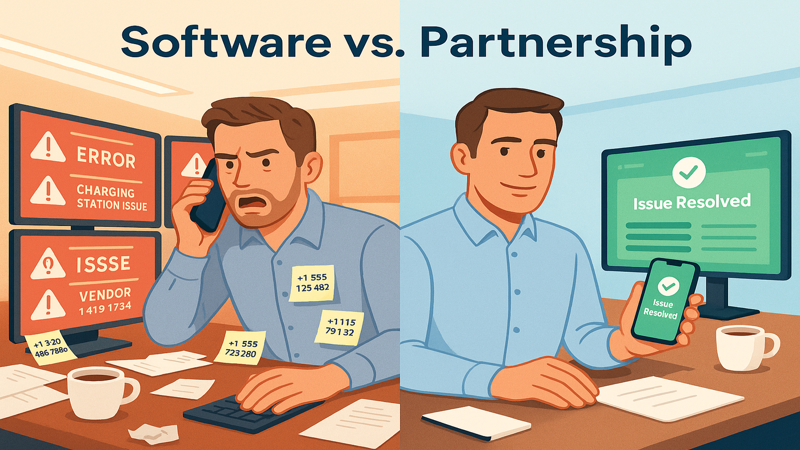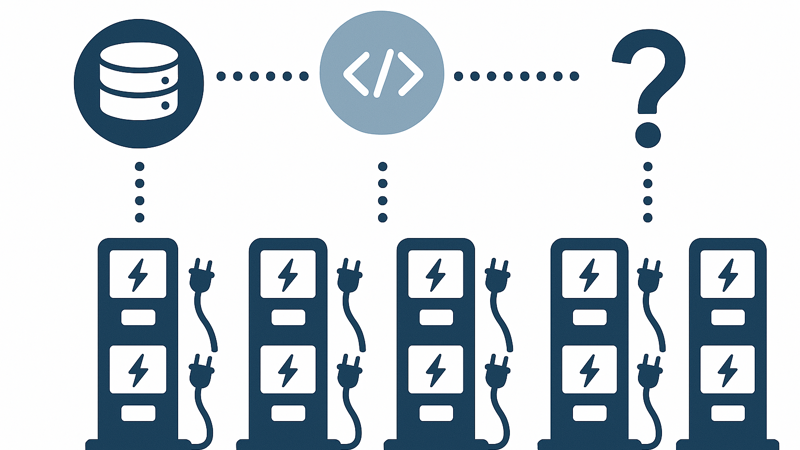
EV trends: 2023 Summary and a Look To The Future
As we come to the end of 2023, we plan to take a look back at what the key developments were for the industry this year, and look at how we think the UK market will develop in the coming year.
2023 summary: more charge points in the ground
Britain’s electrical vehicle industry has already gone to great lengths to solve the problem of charge point availability by rolling out 50,000 chargers across the country. And by the end of the decade, the industry is aiming to install a total of 300,000 public EV charge points.
With the milestone of getting 10,000 rapid/ultra-rapid charge points in the ground also fast approaching, it’s clear to see that the UK has gone some way to tackling worries of charge point availability in its EV infrastructure.
Improved service mandates with charger regulations
The UK made a vital shift from focusing largely on charge point installation/availability, to mandating a minimum level of service across the public network. With the Government passing new regulations designed to improve the user experience of EV chargers, this is an issue that charge point operators need to take seriously as these rules come into force in 2024.
Under these new laws, charge point operators must ensure 99% reliability for all public chargers, allow customers to make contactless payments via touchscreen terminals, handle driver queries via 24/7 customer service helplines, and provide drivers with the freedom to roam across EV charging infrastructure by opening their charge points to wider networks.
Fleet registration driving market
In 2023, we saw fleet registrations driving market sales across the automotive world - and EV was no different. In October’s year-to-date statistics, it emerged that fleet vehicles had had an uptake of 59% in sales compared to just 1.6% in the private market; a trend that carried through to the electric car market with consumer prices still relatively high, and many organisations gearing up for net zero commitments.
2024 trends: the Year of EV charging software?
With charger availability largely accounted for with an incremental plan in place, 2024 will see an increased effort to improve the customer experience as the market moves from early adopters to early mainstream users. With EV charging software being purpose-built to help make the charging experience for EV drivers and charge point operators managing a network, we expect it to play a huge role in 2024’s EV infrastructure. As such, some of the trends we expect are as follows:
Contactless payment and EV roaming
Equipping EV chargers with contactless payment terminals is another way of improving the user experience of EV charge point sites and keeping drivers happy.
If a driver is in a rush to get to a specific destination, they may not have time to go searching for their debit card or a specific app to pay for charging. And if a charge point operator only accepts a single payment method, the driver may not even be able to pay to charge their car.
With contactless payments, customers can charge their car, pay for the usage using any card, and drive off quickly. EV charge point software providers, working in collaboration with industry partners, can help charge point operators accept all types of contactless payments via touchscreen terminals that provide billing and payment information.
Contactless payments not only improve the accessibility of EV chargers for drivers but allow charge point operators to monetise their chargers easily. And drivers will no doubt use their chargers again in the future.
When it comes to meeting e-roaming requirements, software providers are working on signing cross-industry deals with network providers to give their users access to a huge range of charge points across Europe. Read on about Clenergy EV’s latest partnerships and what they mean for drivers and operators here.
Ensuring charge point reliability
Software solutions will increasingly help charge point operators meet these industry requirements and ensure their chargers function as required, right around the clock. For example, apps can flag if a charger suddenly becomes faulty by sending a real-time alert to a technician’s smartphone.
If the problem with the charger only requires a simple fix, maintenance crews can perform a software update remotely. This means technicians don’t have to waste valuable time commuting to the charge point site only to learn that they could have performed a one-stop fix via a software product.
Incorporating software into sustainability strategies
With net zero approaching, many organisations will be focused on tracking sustainability goals; and software is a key means to do that. Not only does it provide live reports on usage and carbon emissions saving compared to using ICE equivalents, it’s also a complete necessity for those managing a network of charge points, say across an organisation.
As more organisations become aware of the benefits early transitioners are seeing in partnering with software providers for their EV charging rollouts, expect an increase in software’s profile and its subsequent incorporation as a key part of any sustainability plan.
Managing grid strain
As EV adoption grows and more chargers are installed over the next few years, an industry-wide concern is that increased EV charging could strain local electricity grids and potentially cause power cuts.
When operators look to scale up their EV charging sites, they must ensure their chargers can charge consistently without straining the electrical grid. Chargepoint software provides a perfect remedy for this problem through load-balancing features.
These enable technicians to track, manage, and distribute charger electricity consumption, decreasing the risk of grid strain while ensuring local infrastructure and EV chargers are always in operation.
Many charge point software solutions perform these features automatically in the app background, giving technicians more energy and time to focus on tasks that require their undivided attention. Most importantly, these features will help charge point operators avoid costly fines for using too much electricity and straining local grids.
A big year For EVs
It’s fair to say that 2023 has been a big year for the British EV industry with the introduction of new industry regulations by the British Government.
While complying with these regulations may sound daunting for charge point operators, they’ll ensure EV infrastructure can cope with rising EV demand and improve the lives of EV drivers.
By implementing features like load balancing, contactless payments, e-roaming, and 24/7 customer service, charge point operators will not only comply with these new regulations but also increase their competitive advantage and revenues by attracting and retaining customers.
And by leveraging the power of EV charging software provided by companies, charge point operators can integrate these features into their business models quickly and easily.
We can help
If you’d like to learn more about the EV transition and the role software plays in this, check out our News or Blogs sections. Here, we cover topics like how software and services are transforming EV infrastructure.
And if you’re a charge point operator interested in learning more about the benefits of working with a trusted software provider, you can get in touch with us via the below form. A member of our team will then get in touch to arrange a low-commitment demonstration of our services.


